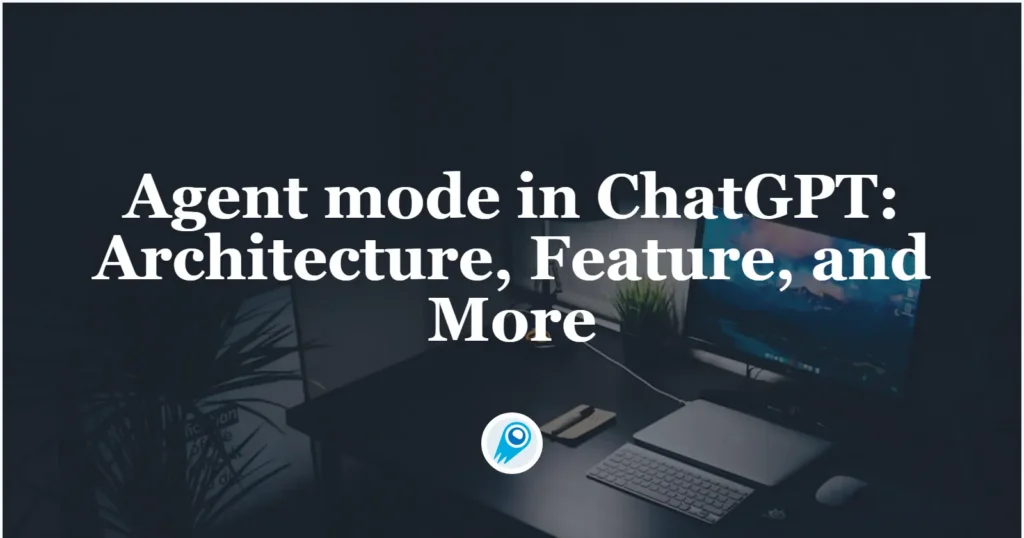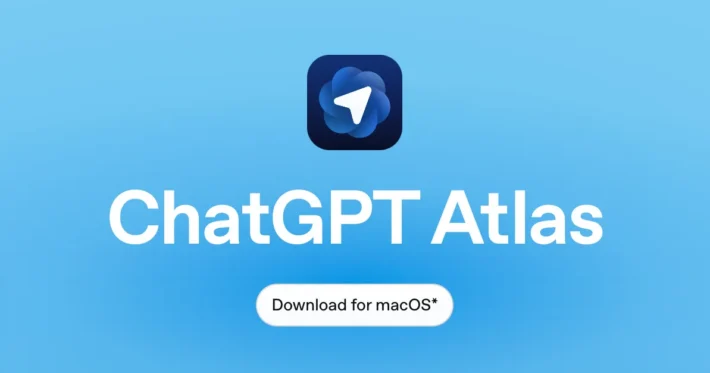Agent mode in ChatGPT: Architecture, Feature, and More

Agent Mode is OpenAI’s move to turn ChatGPT from a conversational assistant into an action-taking digital worker: an AI that can reason, browse, run code, manipulate files, and take step-wise actions on your behalf inside a controlled, sandboxed environment. Rather than only answering questions or drafting text, an agent can autonomously execute multi-step tasks — for example, research a topic across multiple sites, fill out a web form, create a slide deck from gathered sources, or run scripts to analyze a spreadsheet — while showing you what it’s doing and asking for permission before consequential actions. This shift is the core of the agent concept: combine language understanding with tool use and a virtual “workspace” so the model can do things instead of just telling you how.
What exactly is an agent in ChatGPT?
An agent in ChatGPT is a bundled capability that gives the model access to an isolated runtime: a virtual browser, terminal, file workspace, and connectors to selected external services. The agent accepts a natural-language instruction (e.g., “plan a 3-day trip to Kyoto with a budget of $800”), breaks that high-level goal into sub-tasks, performs web research and interactions, manipulates files or code if needed, and returns a completed deliverable — optionally with an on-screen narration of each step for transparency. The user can interrupt, take control, or limit what the agent may do.
How agents differ from classic ChatGPT chats
Traditional ChatGPT sessions are stateless text exchanges (plus memory/configured tools). Agent Mode supplies a sandboxed execution environment that lets the assistant mimic human interactions with websites and files — clicking, scrolling, running code — letting it complete tasks that previously needed a human to finish the final steps. Think of it as giving ChatGPT a secure “virtual laptop.”
How does Agent Mode work
The runtime environment: what does “sandboxed” mean?
Agents operate inside a controlled, ephemeral environment: a sandboxed browser, a terminal for running small code snippets, and a file workspace. “Sandboxed” means the environment isolates agent actions from your local machine and enforces permission checks before interacting with sensitive external services. The sandbox provides visibility (an activity log or narration) so you can see what the agent is doing in real time and stop or take over at any time.
Core components of ChatGPT agent mode systems
1. Planner / Reasoning layer (the brain)
This is the LLM-driven planner that decomposes a user’s high-level goal into a sequence of steps, decides what tools to call, and monitors progress. It reasons about priorities, error handling, and whether to ask clarifying questions.
2. Tools & connectors (the hands)
Agents use a set of “tools”: a visual browser that can interact with webpages, code execution engines (e.g., a Python REPL), file readers/writers (for documents, spreadsheets, images), and connectors to third-party data sources (email, Google Drive, GitHub, CRMs) when enabled. Access to these tools is gated by user permissions.
3. Execution environment (the virtual workspace)
A temporary, secure workspace where the agent runs actions, stores intermediate files, and executes scripts. This workspace is ephemeral: files can be exported when the task completes, and session logs are typically available for audit.
4. Control & safety layer (the governor)
Before taking actions that have consequences (e.g., submitting a form, making a purchase, sending an email), the agent prompts for permission or asks the user to confirm. It also surfaces a live activity stream so users can interrupt or take control. OpenAI emphasizes user control as central to the design.
Capabilities enabled by the architecture
- Autonomous browsing and data collection: visit sites, extract structured data, and synthesize findings.
- Interactive form filling and submissions: complete web forms or place orders where allowed.
- File manipulation: open, edit, and generate documents, slides, and spreadsheets.
- Code execution and data analysis: run scripts to clean or analyze data and produce charts/reports.
- Integrations: connect to third-party services (when permitted) for email, calendar, cloud storage, or commerce flows.
What are the key features and capabilities of ChatGPT Agent?
Key features
- Autonomous multi-step workflows: Agents can plan and execute sequences of actions that would normally require multiple manual steps.
- Visual web interaction: Agents use screenshots and browser automation to navigate websites, click elements, and fill forms like a human would.
- Code execution and data analysis: Agents can run scripts or short programs (e.g., Python) to analyze data, transform files, or automate processing steps.
- Document generation: Agents can produce ready-to-share outputs — spreadsheets (Excel), slide decks (PowerPoint), reports, and images — from raw research or uploaded files.
- Connectors & plugins: When authorized, agents can use connectors for Gmail, Google Drive, GitHub, or other services to incorporate private data and perform actions within those services.
- Interruption and oversight controls: You can step in, pause, or cancel agent actions; the agent will also request confirmation for potentially sensitive steps.
Recent expansions: agentic commerce and transactional flows
OpenAI has begun integrating commerce primitives that let agents participate in shopping workflows (e.g., “Instant Checkout”), so agents can help find and — with confirmation — purchase items on behalf of users. This shows how agent capabilities are already extending into real-world, transactional domains.
Limitations to be aware of
- Sandbox constraints: Because agents operate in a virtual computer, they can’t reliably use your existing logged-in sessions unless you explicitly link them; this can make some tasks (e.g., modifying a private CRM entry) more complicated.
- Reliability & brittleness: Early hands-on reviews show the agent can be slow, get stuck on complex interactive sites, or produce results that are “complete” only inside its sandbox but didn’t affect the real world (e.g., added items to a virtual cart). Expect growing pains.
What are the benefits of using a ChatGPT agent?
Why use an agent instead of a plain chat?
- Saves time on multi-step tasks. Agents automate repetitive, manual workflows (research → compile → deliver) so you can focus on judgment rather than clicking and formatting.
- Reduces friction between apps. Agents act as the glue that navigates web UIs and APIs, removing the need for manual data transfer.
- Produces end-to-end deliverables. Instead of a list of instructions, you can get a finished slide deck, spreadsheet, or report.
- Scales simple automation. Teams can template agents for recurring work (onboarding checklists, weekly research briefs, data pulls) and reuse them safely.
Business and product benefits
Recent product moves show how agents are being applied commercially: OpenAI’s agentic features are being extended into commerce (e.g., Instant Checkout inside ChatGPT announced in late September 2025) which enables agents to not only identify items but complete purchases when permitted; similarly, Microsoft has introduced its own “Agent Mode” integrations into Word/Excel to create documents or spreadsheets from prompts, highlighting cross-vendor momentum toward agentized productivity. These developments indicate a rapid shift from passive assistance to active, revenue-driving agent experiences.
Common use cases for beginners
What simple tasks can a beginner ask an agent to do?
- Competitor scan: “Find the three most recent product pages for X competitor and summarize price and shipping details into a table.”
- Meeting prep: “Search my inbox (with permission), collect the last three meeting notes, and draft a one-page briefing.”
- Data clean-up: “Open this CSV, remove duplicates, normalize date formats, and return a cleaned CSV.”
- Content creation: “Research topic Y, create a 10-slide deck outline, then generate speaker notes.”
- Booking and scheduling: “Find available flights on these dates and propose the top two itineraries.”
Beginners should start with clearly scoped tasks and limited permissions (for example, grant read-only access to a single folder) while they learn the agent’s behavior.
Example beginner workflow
- Define the goal (one sentence).
- Grant minimal access (a single file or connector).
- Ask the agent to plan — request a short plan and a list of proposed actions.
- Approve the plan before execution.
- Review output and iterate.
This keeps risk low and speeds learning.
Best practices for Agent Mode
How should individuals and teams start safely?
- Least privilege: Grant only the connectors and file access the agent needs. Avoid blanket access to email, banking, or unrestricted drives. OpenAI Help Center
- Request a plan before action: Ask the agent to outline steps it will take; require confirmation for any action that writes or sends data. OpenAI开发者
- Use templates: Encapsulate common workflows as templates so the agent’s behavior is predictable and repeatable. OpenAI开发者
- Audit and logging: Enable session logs and keep human checkpoints for sensitive operations; enterprises should integrate logs into their SIEM or audit processes. OpenAI Help Center
- Test on non-critical data: Before authorizing live actions (payments, public posts), run the agent on dummy data or a test account. OpenAI
How to design prompts for agent success
- Be goal-oriented, not prescriptive. Tell the agent the outcome you want and constraints (format, deadline, number of items).
- Ask for a stepwise plan first. Have the agent produce a checklist or “thoughts” about how it will proceed, then approve.
- Limit scope and time. For long tasks, instruct the agent to operate in short cycles with human review.
These practices improve predictability and safety.
FAQs about Agent Mode in ChatGPT
How do I turn on Agent Mode?
Agent Mode is available in ChatGPT as a selectable tool within the interface for eligible plans (OpenAI rolled the feature out in July 2025 and has been expanding availability across subscription tiers and enterprise offerings). Availability may differ by plan and region; consult the product documentation or release notes for your account.
Can an agent access my personal accounts?
Only if you explicitly grant connectors or credentials. Modern agent implementations use OAuth or scoped tokens and prompt you to authorize access to specific services (e.g., Gmail, Google Drive). Always verify the exact permissions before consenting.
Is Agent Mode safe enough for sensitive tasks?
Agents include safety features (permission prompts, session logs, ephemeral execution). However, sensitive tasks — financial transactions, legal filings, or actions that could create reputational risk — should include human-in-the-loop approvals and enterprise guardrails. Treatment of highly sensitive tasks depends on your risk tolerance and the controls provided by your plan or vendor.
What are the limits and failure modes?
Agents can misinterpret web pages, encounter CAPTCHAs, hit API rate limits, or produce incomplete scrapes. They’re best used where a human can validate the output. Instrumentation (logs, test runs) helps find and fix brittle spots.
Can I build my own agent or integrate one into my product?
Yes. OpenAI and other AI platform providers offer developer APIs, SDKs, and agent-building toolkits that expose the primitives (models, tools, state, orchestration) needed to craft custom agents. These resources let you tune planning behavior, add domain tools, and wire up connectors. Check the official developer guides for code examples and SDKs.
Final thoughts
Agent Mode represents an important evolutionary step: from conversational assistants that tell you what to do, to agentic assistants that do things for you. For everyday users and small teams, that means faster creation of briefs, reports, and draft outputs. For businesses, it opens new opportunities (and new risks) for automation, productization, and commerce (note the emergence of features like in-app instant checkout tied to agentic workflows). Expect the capabilities to broaden quickly — parallel advancements from major platform players (including Microsoft’s “Agent Mode” experiments in Office) indicate a near-term landscape where agentic features become a mainstream part of productivity tooling. But be realistic: early agents are powerful helpers, not infallible substitutes for human judgment.
Getting Started
CometAPI is a unified API platform that aggregates over 500 AI models from leading providers—such as ChatGPT series, Google’s Gemini, Anthropic’s Claude, Midjourney, Suno, and more—into a single, developer-friendly interface. By offering consistent authentication, request formatting, and response handling, CometAPI dramatically simplifies the integration of AI capabilities into your applications. Whether you’re building chatbots, image generators, music composers, or data‐driven analytics pipelines, CometAPI lets you iterate faster, control costs, and remain vendor-agnostic—all while tapping into the latest breakthroughs across the AI ecosystem.
To begin, explore the ChatGPT model ’s capabilities in the Playground and consult the API guide for detailed instructions. Before accessing, please make sure you have logged in to CometAPI and obtained the API key. CometAPI offer a price far lower than the official price to help you integrate.
Ready to Go?→ Sign up for CometAPI today !



